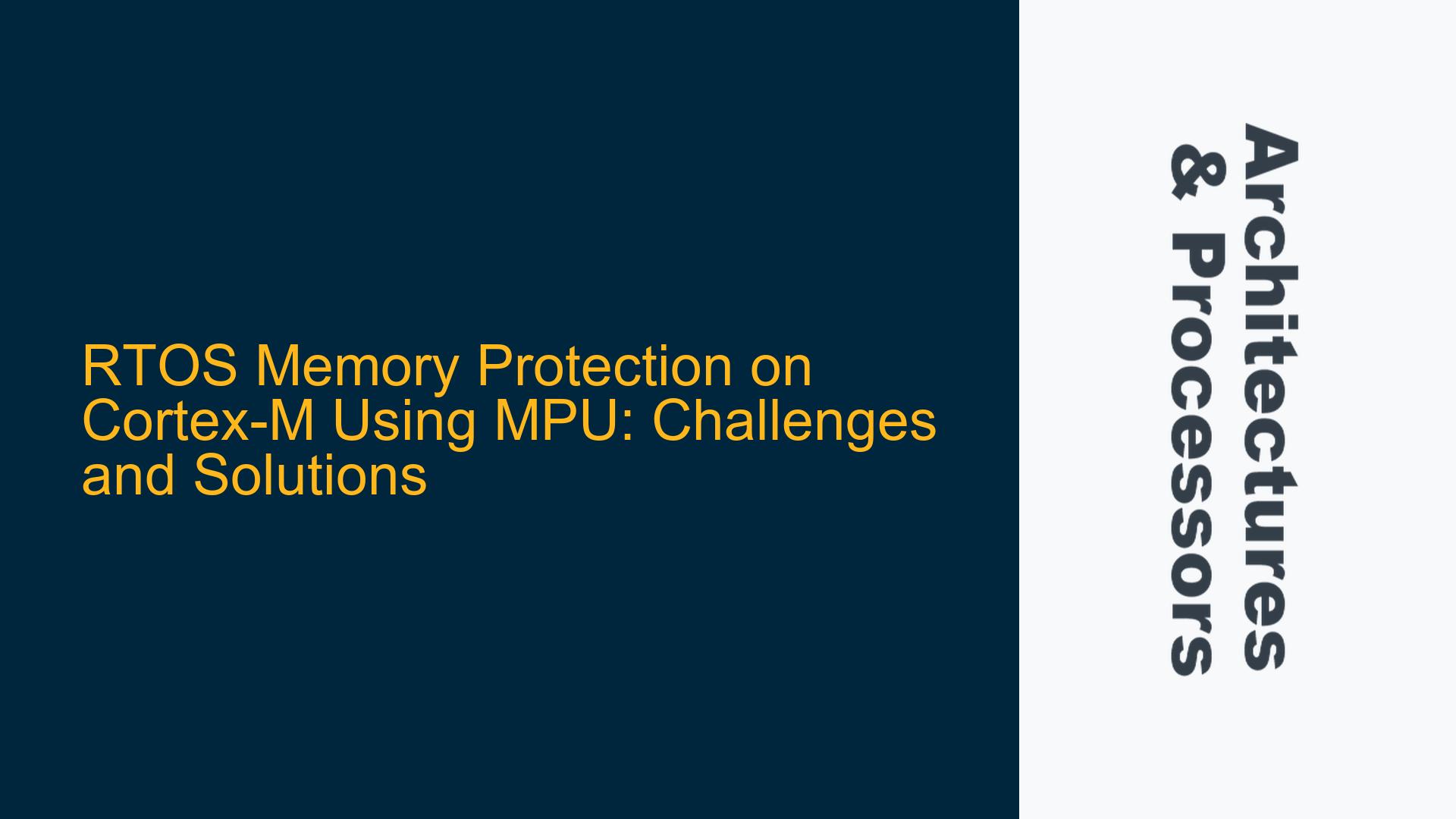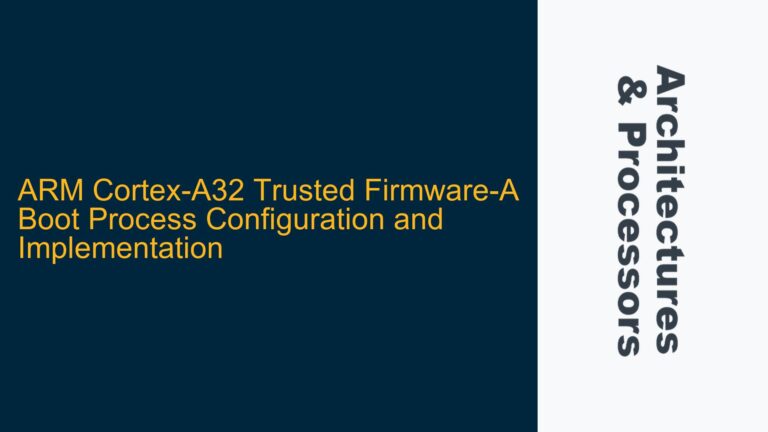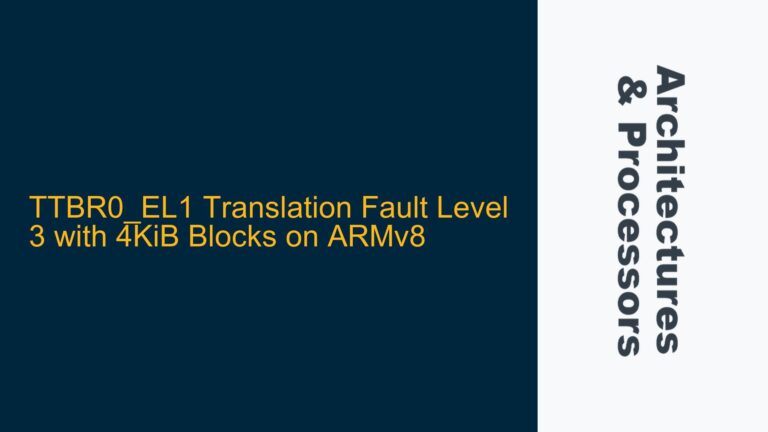RTOS Memory Protection Mechanisms on Cortex-M Processors
Real-Time Operating Systems (RTOS) on ARM Cortex-M processors often rely on the Memory Protection Unit (MPU) to enforce memory protection between tasks. The Cortex-M series, unlike Cortex-A or Cortex-R, does not include a Memory Management Unit (MMU), making the MPU the primary mechanism for memory protection. The MPU allows the RTOS to define memory regions with specific access permissions, ensuring that tasks cannot inadvertently or maliciously access memory outside their allocated regions. However, the MPU’s limited number of regions (typically 8 on Cortex-M processors) and coarse granularity present significant challenges for RTOS implementations.
The MPU operates by dividing the memory map into regions, each with configurable attributes such as size, base address, access permissions, and executable status. During a context switch, the RTOS must reconfigure the MPU to reflect the memory access permissions of the incoming task. This dynamic reconfiguration is critical for maintaining isolation between tasks but introduces complexity and potential performance overhead.
One of the key limitations of the MPU is its granularity. The smallest region size is often 32 bytes, which can lead to inefficient use of memory when protecting small data structures or stacks. Additionally, the limited number of regions forces the RTOS to carefully prioritize which memory areas to protect, often leaving some regions unprotected or shared between tasks. This trade-off between protection granularity and system performance is a central challenge in RTOS design for Cortex-M processors.
MPU Configuration Challenges and Task Isolation
The primary challenge in using the MPU for task isolation lies in its limited number of regions and the need for dynamic reconfiguration during context switches. Each task typically requires its own stack, heap, and possibly private data regions. With only 8 MPU regions available, the RTOS must carefully allocate these regions to maximize protection while minimizing performance overhead.
For example, a task’s stack must be protected to prevent stack overflow or underflow from corrupting adjacent memory. However, protecting each task’s stack individually would quickly exhaust the available MPU regions. To address this, some RTOS implementations use a shared stack region for multiple tasks, sacrificing isolation for efficiency. This approach increases the risk of stack-related memory corruption but reduces the frequency of MPU reconfiguration.
Another challenge is protecting shared resources, such as message queues or shared memory buffers. The MPU does not support fine-grained access control within a region, making it difficult to enforce task-specific permissions on shared resources. Some RTOS implementations use message passing mechanisms to avoid shared memory altogether, copying data between tasks instead of allowing direct access. While this approach enhances isolation, it introduces additional overhead and complexity.
The MPU’s coarse granularity also complicates the protection of small data structures. For instance, protecting a task’s control block or priority-specific data structures may require dedicating an entire MPU region, leading to inefficient use of resources. This limitation often forces RTOS designers to make trade-offs between protection granularity and system performance.
Implementing Effective MPU-Based Memory Protection in RTOS
To implement effective memory protection using the MPU, RTOS designers must adopt a combination of strategies to address the MPU’s limitations. These strategies include careful region allocation, dynamic MPU reconfiguration, and the use of complementary mechanisms such as stack overflow detection.
First, the RTOS must prioritize which memory regions to protect based on the system’s requirements. Critical regions, such as the kernel’s memory and task control blocks, should always be protected. Task-specific regions, such as stacks and private data, can be protected dynamically during context switches. By prioritizing regions, the RTOS can maximize protection without exceeding the MPU’s region limit.
Second, the RTOS must efficiently manage MPU reconfiguration during context switches. This involves saving the current MPU configuration, loading the new task’s configuration, and ensuring that the switch occurs without introducing vulnerabilities. Some RTOS implementations use a fixed set of MPU regions for the kernel and a subset of regions for task-specific protection, reducing the overhead of reconfiguration.
Third, the RTOS can use complementary mechanisms to enhance memory protection. For example, stack overflow detection can be implemented using hardware watchpoints or software-based checks. While these mechanisms do not provide the same level of isolation as the MPU, they can mitigate the risks associated with stack-related memory corruption.
Finally, the RTOS should leverage message passing and other communication mechanisms to minimize the need for shared memory. By copying data between tasks instead of allowing direct access, the RTOS can reduce the complexity of MPU configuration and enhance system reliability.
In conclusion, while the MPU’s limitations present significant challenges for RTOS implementations on Cortex-M processors, careful design and optimization can enable effective memory protection. By prioritizing regions, managing reconfiguration efficiently, and using complementary mechanisms, RTOS designers can achieve a balance between protection granularity and system performance.






